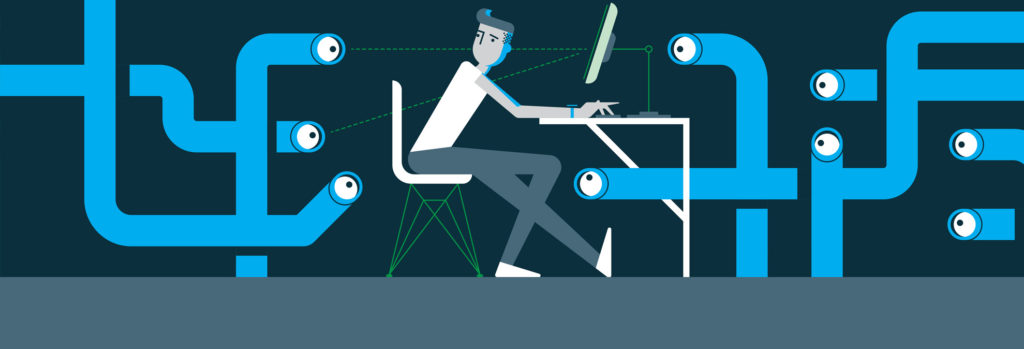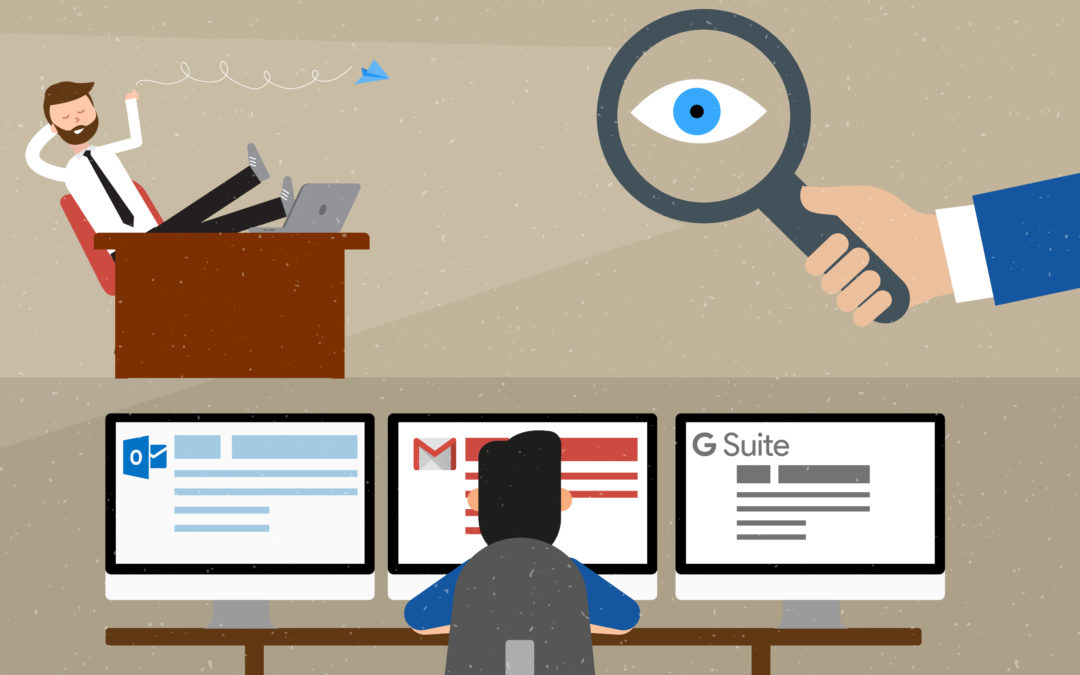Recently I found myself in the unusual situation where a work colleague wanted to install a piece of software on my computer that monitored in some way. Asked to do so by the higher ups, the only information they could offer was that it would monitor both the computer’s network traffic and its files and inform someone if there was something it deemed potentially malicious.
“Think of it as an anti-virus program that can also check for network intrusions” they said.
“Do I have to have it?” I asked.
“No, but…”
“Then I’ll stop you right there, good Sir.”
That was a month ago, but even then, I knew the time would come that the option wasn’t presented and rather I’d be forced to instead. With no more information about it, I had no idea what it would do, how it would do it and what impact it would have on my computer. I decided to seek legal advice about whether or not my employer could rightfully force the installation of software that would monitor my computer.

The short answer is yes, but it isn’t without its complications. In Australia the matter of employee surveillance and their right to privacy is a complicated mess of federal and state laws. Some states have proactively modernised their regulations and introduced legislation that specifically caters to today’s modern workspace, whilst others have been left in the dark ages with little change or no specific regulations at all.
Currently there are three states with targeted legislation relating to surveillance in the workplace. NSW has the most comprehensive version known as the Workplace Surveillance Act (2005), in the ACT there’s the Workplace Privacy Act of 2011 and Victoria has the oldest and loosely applicable Surveillance Devices Act of 1999.
Victoria’s Surveillance Devices Act (1999) predominately deals with the unlawful monitoring and recording of staff using optical and audio devices as well as the regulations of tracking devices. It makes little to no mention of electronic surveillance and is only peripherally relevant.
NSW’s and the ACT’s are far more appropriate and for those states with no direct regulation, offer a precedence in how employers might go about implementing electronic surveillance in an appropriate and legal manner.
For the most part, an employer is within their rights to install or dictate the installation of any monitoring software on a computer they supply for the purposes of work.
What employers can’t do is install monitoring software without advising employees they’re doing so. This along with exactly what is being monitored needs to be clearly outlined and presented to each employee in a manner they understand no less than 14 days prior to any monitoring software being installed or activated.
“An employer may only conduct surveillance of a worker in a workplace if the employer gives written notice to the worker under this section; and the surveillance is conducted in accordance with the notice.” — NSW Workplace Surveillance Act 2005
Of course there are exceptions to the rules and employees can be monitored without being informed, but only when specifically allowed. To do so requires the employer to obtain a “covert surveillance authority”, which has been issued by a Magistrate.
Covert surveillance is predominately restricted to unlawful activities and the proviso to do so takes into account the severity of the unlawful act and whether the covert surveillance will affect the right of privacy to other employees.

Whether your business is in Victoria, NSW or any other state regulated or not, the introduction of any employee surveillance is something professionals advise is a risk and can be harmful not only to your employee’s mental well-being but in their workplace performance too.
Researchers Debora Jeske and Alecia Santuzzi found that the introduction of continuous monitoring leads to “more negative attitudes on the job and towards the organisation”, as did Kirstie Ball, professor of organisation at the Open University Business School, noting it may also “intensify stress for workers” and lead to “low self-esteem, anxiety and depression”.
In the modern age, there’s no questioning that computer systems need monitoring for their protection. Malware, viruses, data-breaches and security are all extremely important, but there’s a fine line between the extent or rather the invasiveness of those tools used and the security they provide.
Please note Reckoner nor the article’s author are legal entities or practicing in Australian law at either a Federal or State level. For qualified legal advice please consult a legal team in your state of residence.
Information detailed in this article was obtained from a variety of sources including, but not limited to, the following online resources.
– Workplace Surveillance Act (2005)
– Workplace Privacy Act (2011)
– Surveillance Devices Act (1999)
– McDonald Murholme employment lawyers
– Maurice Blackburn — Surveillance blog
– LawPath — 5 things to know about the Surveillance Act
– HR Advance — Can we monitor our employees?
– The Effects of Performance Monitoring on Emotional Labor and Well-Being in Call Centers
– Big Brother boss: The psychological weight of workplace monitoring
